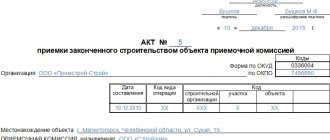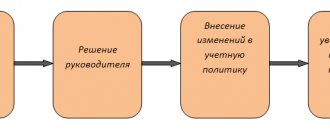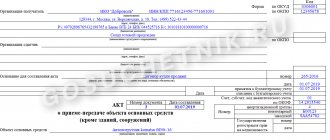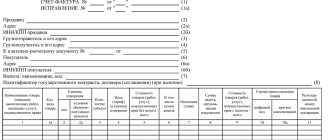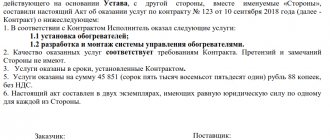In this article we will look at: form KS-11 (Acceptance certificate for a completed construction facility). Let's find out how to fill out the form and understand the step-by-step instructions for filling it out.
All construction organizations draw up certain documentation at different stages of work. For this purpose, many reporting forms have been developed that allow you to document business events correctly. In particular, the transfer of a completed construction project must be supported by an act in the KS-11 form.
What is the KS-11 form?
The acceptance certificate for a completed construction facility is used to reflect in the accounting of the facility in respect of which all the necessary construction and installation works have been completed or reconstruction has been carried out. The form is unified by the provisions of the State Statistics Committee and has the approved form OKUD 0322003.
You can familiarize yourself with the KS-11 form.
Important! This document must be drawn up by the customer after the condition of the object has been checked and the results of all measurements have been taken into account, since it is the test results that represent the main information reflected in the report.
Reception and delivery of completed work
Here you need to provide a link to the document on the basis of which the initial design data was issued. Costs, additional conditions and signatures of the parties The last part contains mostly only numbers. Point 12-13. Here the numbers indicate the final cost of the construction project according to the design and estimate documentation (broken down by the cost of construction and installation work performed and the cost of equipment, tools and inventory).
It is drawn up in the required number of copies and signed by representatives of the work performer (general contractor) and the customer or another person authorized by the investor for the work performer (general contractor) and the customer, respectively.
The acceptance certificate is the basis for the final payment of all work performed by the contractor in accordance with the agreement (contract).
Typical mistakes when filling out Form KS-11
The formation of the document may be accompanied by errors on the part of the person responsible for filling out the KS-11 act. Let's look at the violations that occur most often in practice.
| P/n | Errors when filling out the KS-11 act | |
| Violation | Elimination method | |
| 1 | There was an error in one of the cells intended for a numerical indicator | From a theoretical point of view, corrections can be made to the document. To do this, it is enough to use the general rules for correcting documents, crossing out the incorrect entry and indicating the correct one. However, in practice, if a violation is identified, it will be more rational to prepare the document again. |
| 2 | The act in form KS-11 is not signed by one of the parties | Due to the fact that this document serves as the basis for notifying the statistical office about the completion of construction, filling out all mandatory details is a mandatory requirement for the performing company |
| 3 | For a construction project belonging to the category of non-residential buildings, the table “Option B”, intended for residential premises, has been filled out. | When drawing up a document, you need to pay attention to the tables. Depending on what kind of object is built, it is necessary to determine which of the tables must be filled out. In this case, there is no need to fill out the second table. |
Features of compilation
The act of acceptance of the completed facility into operation must be completed after checking its readiness for operation. As a rule, it is produced by the customer in order to establish strength and resistance to loads - external and from its own weight. Full settlement under the contract is carried out after acceptance of the completed construction work.
Terms and requirements
The commissioning of the constructed facility in accordance with the instructions of Article 55 of the Civil Code of the Russian Federation is carried out on the basis of a permit. It is issued by the body that has given consent to the construction of any object based on the application of the developer. In addition, it is required to obtain a conclusion from the supervisory authority on the compliance of the work performed with the above requirements.
The procedure for accepting the results of work performed under a contract is regulated by the provisions of Articles 720, 753 of the Civil Code of the Russian Federation. In accordance with them, the customer is responsible for inspecting the completed object and accepting the result of the work performed within the agreed time frame.
The customer is obliged to immediately begin accepting the work performed by the general contractor upon notification of their readiness. The organization of acceptance and its implementation is carried out at the expense of the customer, unless another option is provided.
During the procedure, an act of completed construction is drawn up, form sample KS-11, which can be obtained from the State Construction Committee of the Russian Federation.
It records the results:
- examinations performed;
- control tests of individual structures and elements of the supporting frame and enclosing devices and measurements;
- checking the documents presented by the contractor, which confirm the compliance of the accepted object with the approved project, and the work performed - with building codes and regulations, the established standard;
- conclusions of the inspection of the facility by supervisory authorities.
It is signed by the general contractor and the customer or their representatives, who are vested with certain powers. If the customer is also the contractor, then the persons responsible for acceptance are appointed by the investor.
Document structure
The KS-11 report should display information regarding:
| Indicators | Description |
| Registration number and date of compilation | — |
| Full name of the customer of the work and its performer | — |
| Construction site | its address, characteristics and cost |
| Name of organization | which issued a permit for the construction of the facility |
| List of persons | who were directly involved in construction and completed design and estimate documentation |
| Name of organization | which issued the initial data for the design, the name of the body that approved the design and estimate documentation |
| Deadlines for completion of work | — |
The customer can use the instructions of the Letter of the State Construction Committee of the Russian Federation No. LB-6062/9, which explains the example of filling out the KS-11 of a completed construction project, drawn up in 2 or more copies according to the number of parties to the construction contract.
Required papers
The act of acceptance of the finished facility by the general contractor is accompanied by as-built documentation. It is drawn up by the general contractor during the construction process.
These include:
| Indicators | Description |
| Certificates of acceptance of geodetic works | graphic representations of their implementation |
| Layout diagrams of utility networks and equipment, underground communications | — |
| General and special books of recording the characteristics of the work performed | including quality control and supervision journal |
| Interim acceptance certificates for certain types of construction processes | — |
| Test certificates for technological equipment and engineering systems | — |
| Working drawings of the facility being built | indicating the compliance of individual stages of construction processes with the graphic images set out in them, work projects, their test descriptions, technological maps for certain types of processes |
| Other types of documents | reflecting the fact of implementation of approved design solutions, including architectural and design |
Design algorithm
The work contractor must:
| Indicators | Description |
| Contact the state building supervision authority | to receive a conclusion on the work performed |
| Obtain permission from the authorized body | for commissioning of a completed construction project |
| Notify the customer that the object is ready for delivery | — |
| Submit static reporting | on the fulfillment of obligations under a contract |
The customer records the fact of commissioning of the facility accepted by him in the local executive authority.
Video: how to create
Instructions for filling out the acceptance certificate for a completed construction project
As already mentioned, the act is drawn up on the mandatory form KS-11. Thanks to this, you just need to look at the document and you can immediately determine that it concerns a construction project that is completely completed, which means that it will soon be used for its intended purpose. The document consists of several sheets, in each of which you need to enter the relevant information:
Filling out the first sheet
This part is intended to enter detailed information about the artist. There must be a “header” here, which indicates the document number, its name and the date of preparation. Below is the name of the contractor company, OKPO code. Then information about the responsible persons on both sides is entered. The following information is entered point by point:
- Information about the construction site, namely its exact address and characteristics.
- The government organization that has given written permission to carry out this construction work.
- If subcontractors were involved in the construction of the structure, all of them are indicated in this paragraph.
- Some organization was involved in the design. Its name is indicated here. Additional companies that were involved in preparing the estimate and project are also registered.
- It is noted on the basis of which document the design work for this facility began.
- Information about the authorities that approved the estimate and project.
- The period during which construction work was carried out.
Filling out the second sheet
- This item completely occupies the second sheet. Here you can see two tables. Their columns contain hints on how to fill them out. As a rule, there are no difficulties with this. You just need to remember that only one table needs to be filled out. So, if the object is a production, industrial or other similar building, then you need to fill out the first table. The second is intended for situations where the building is a residential building.
Third page
- If any equipment was installed inside the building, the responsible persons had to accept it and allow it to be put into operation. This paragraph indicates the numbers of these acts.
- Certificates and certificates confirming the fact that the communications available in the building have been accepted for operation.
- This paragraph contains a table designed to display all the actions taken to improve the surrounding area. For example, this could be laying asphalt, planting plants, arranging children's and sports grounds, etc.
Final part
- The final cost of the object is indicated here. In fact, this should be the figure that is written in the estimate.
- The amount of fixed assets accepted.
- A link to the application containing all additional documentation that must be attached to the act.
- If any additional conditions have been determined without which the object cannot be delivered, they are indicated here. For example, turnkey delivery of a building.
After entering all the information, each party checks its correctness and reliability. You need to know that if any errors are found, you should not make corrections. In such a situation, you will have to fill out a new form. Cross-outs and blots in the future become the reason why a document may be declared invalid.
The final stage is affixing signatures with transcripts. Only authorized representatives of organizations have the right to sign their autographs on this document. In addition to signatures, their positions must be indicated. At the very bottom you need to re-indicate the names of the customer and contractor.
( Video : “The customer does not sign the work acceptance certificate, what should the contractor do?”)
Process of acceptance of finished objects
Norms
The Letter of the Federal Statistics Service No. 01-02-9/381, signed on May 31, 2005, establishes the procedure for using the KS-11 form. Two types of acceptance certificate for completed construction projects have been approved:
- KS-11 , which indicates the completion of construction work on the facility;
- KS-14 , signed by members of the acceptance committee as confirmation of its full readiness.
This applies to structures and buildings for civil and industrial purposes, all work carried out on these buildings: reconstruction, expansion, technical re-equipment.
The procedure and rules for delivery after all work has been completed are determined by Art. 753 Civil Code of the Russian Federation:
- After the inspection, the customer agrees to accept the object, this is confirmed by signing an act.
- When a party does not agree to sign a document because the structure does not comply with contractual or design conditions, then an appropriate note should be made about this in the act.
- The signed act has legal force and can only be canceled in court if compelling reasons are provided.
An important property of the act is that its signing becomes the basis for full payment for all construction and installation work performed under the contract.
Commission
The commission includes persons appointed by decision:
- contractor (general contractor);
- customer (investor).
If the role of contractor and customer is one organization, then acceptance is carried out by persons appointed by the investor. An act is drawn up according to the number of commission members, each of them must sign.
The process of acceptance of a structure consists of carrying out inspection procedures, inspections, control tests, measurement of parameters, design and other documentation, which serve as evidence that the object fully complies with the designed parameters, as well as the standards of norms and regulations. In addition, it is necessary to consolidate all these actions with the conclusions of supervisory structures.
